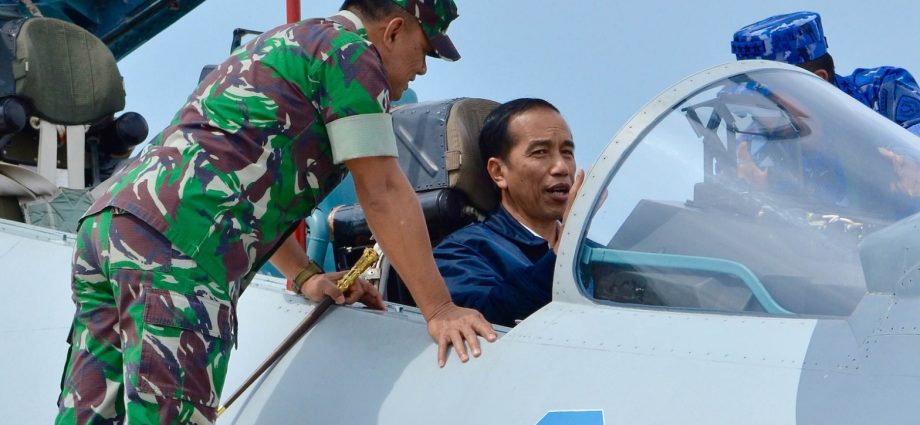Cash-strapped Indonesia is staying the course of its participation in South Korea’s KF-21 Boramae advanced jet fighter program, underscoring Jakarta’s perceived urgent need to modernize and improve its air force.
This month, Janes reported that Indonesian state-owned aircraft manufacturer PT Dirgantara Indonesia (PTDI) said that Indonesia is still committed to South Korea’s KF-21 Boramae 4.5 generation fighter, despite missing a payment deadline for the project.
Janes quotes PTDI as saying Indonesia has already paid off 21% of its cost share through June 2023. It also said there is still no definite timeline for releasing the 2024-2026 payment plan by the Indonesian Ministry of Defense, with PTDI planning to pay off 32% of the cost-share payment.
However, Janes says that the South Korean Defense Acquisition Program Administration (DAPA) mentioned that Indonesia has yet to provide its plans for the new payment and is seeking talks with Indonesia on the matter.
Janes notes that the Korea Aerospace Industries (KAI) engineering and manufacturing development phase of the project cost US$6.2 billion, with Indonesia agreeing to pay 20% of the expense, or approximately $1.2 billion.
The report notes that DAPA is planning its response, which could consist of senior-level meetings with Indonesian counterparts. DAPA says that it will continue discussions with the Indonesian government to resolve cost-sharing issues and put the project back on track.
In a separate article from April 2023, Janes notes that Indonesia will receive one KF-21 prototype when it fully meets its financial obligations under the deal.
Indonesia’s determination to proceed with the KF-21 project underlines its desire to modernize the Indonesian Air Force (IDAF), which a lack of resources has handicapped to date.

Asia Times noted in June 2023 that the IDAF has long sought to improve its currently insufficient capability to cover its airspace and meet evolving security needs vis-à-vis China.
As of April 2023, the IDAF operated a hodgepodge fleet of 49 fighter aircraft, which includes 33 F-16s, 11 Su-30s and five Su-27s, with the Su-30 serving as the IDAF’s primary fighter.
While Indonesia planned to purchase Russia’s Su-35, it was ultimately dissuaded by US threats to hit Jakarta with the Countering America’s Adversaries Through Sanctions Act (CAATSA). The US offered Indonesia 36 F-15EX fighters instead.
However, the F-15EX’s high unit price and the risk of possible US restrictions on the jet’s avionics and weapons drove Indonesia to opt for French-made Rafales instead.
Budget limitations and shifting priorities, however, may limit how many jets Indonesia ultimately buys. Those financial constraints were seen in Indonesia’s recent purchase of a dozen 26-year-old ex-Qatari Mirage 2000-5 jets, a procurement of aged aircraft that was widely panned.
The new-age KF-21 project looks like a better bet than the Rafale, which first flew back in 1986.
Military Watch notes in an October 2022 article that the Rafale lacks stealth capabilities, uses weak engines and lacks access to derivatives of the Taurus air-launched cruise missile (ALCM). The report says that the KF-21 offers superior performance to the Rafale at a lower cost.
Seoul views the KF-21 as part of a wider drive to become a major exporter of high-tech weaponry, with potential buyers looking for top-of-the-line fighters at more reasonable prices than Western models.
That drive ties into South Korea’s New Southern Policy, which emphasizes close political and economic links with the Association of Southeast Asian Nations while positioning as an arms supplier to the region.
In February 2023, Aerotime reported that KAI aims to export its combat jets and helicopters to the Middle East, with a Memorandum of Understanding (MOU) signed between KAI and the United Arab Emirates (UAE) in January 2023.
Aerotime noted that the UAE weighed the KF-21 against comparable US and French models and found them to have fewer armament restrictions.
Breaking Defense reported in a June 2023 article that Poland and Malaysia could also be potential customers for the KF-21.
The report mentions that the Polish Armaments Group (PGZ) has expressed interest in the aircraft and designated 2026 as its timeline to decide whether to commit to the program.
The source says Poland previously ordered 48 FA-50 light fighters from South Korea, the largest-ever FA-50 European order. The FA-50 was jointly developed by KAI and America’s Lockheed Martin.
Malaysia could choose between an improved FA-50 or the KF-21 as a replacement for its Su-30 MKMs and F/A-18s, following up its earlier order of 36 FA-50s, said Sangshin Park, KAI’s international business development director for Asia.
Park also hinted that the KF-21 might eventually replace the Su-30s MKMs now in Malaysia’s service, which maintenance issues have hounded due to the difficulty of acquiring Russian spare parts amid the ongoing Ukraine war.

The FA-50 orders may establish political and military ties and bureaucratic mechanisms for future KF-21 sales to those countries.
As with Indonesia’s decision to drop South Korea as its primary partner for its submarine program, payment difficulties in the KF-21 project may still have significant strategic repercussions for both.
Failing to develop a workable solution for Indonesia’s KF-21 payment woes could result in diplomatic fallout and a loss of trust that hampers future bilateral defense cooperation. While Indonesia says it remains committed to South Korea’s KF-21 program, Jakarta runs the risk of being sidelined or replaced by more financially fit prospective partners.

